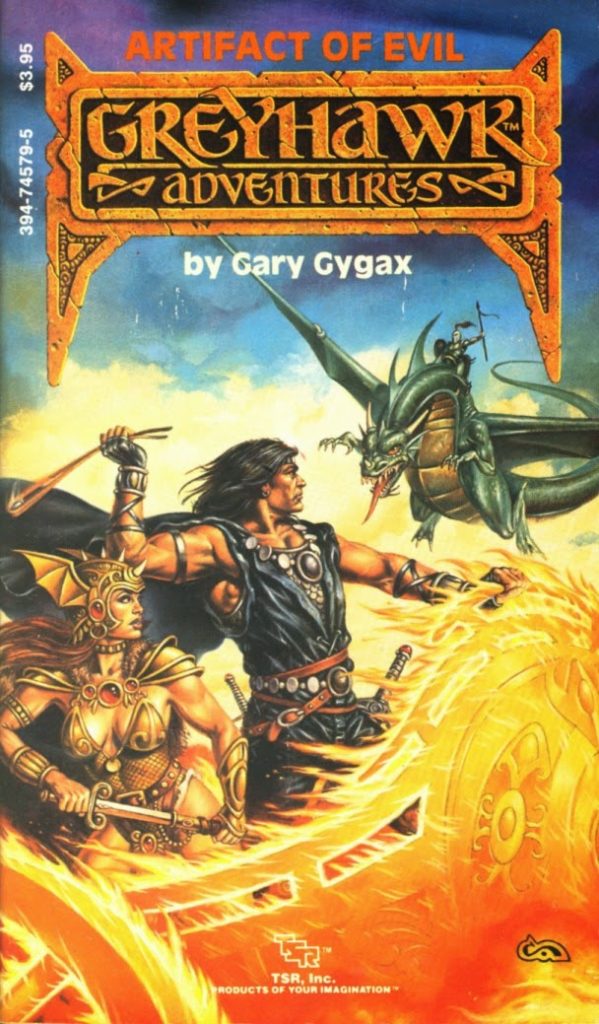(Caution: Spoilers)
Hot on the heels of my review of Gary Gygax‘s first novel, Saga of Old City, we come to the second in the series (and the last published by TSR), Artifact of Evil, published in 1986.
This book has a very different feel than its predecessor, even though the action takes place only a few months after the end of the first. Where Saga of Old City was episodic, with no real plot threading throughout it other than chronicling Gord’s early adventures, Artifact of Evil has a definite plot. The forces of Evil are searching for a powerful artifact that can be used to loose the evil god Tharizdun from his prison, thus bringing doom to the world unless they can be stopped.
The novel begins in media res with a siege and battle of a Scarlet Brotherhood-controlled stronghold in the Pomarj, Castle Strandkeep. It’s fascinating to see Gygax’s version of what a mass battle would look like in a D&D world; there’s even a justification for the creation of all those dungeons underneath castles (to make it much more difficult for sappers to undermine castles during sieges; imagine tunneling into a warren of trolls or ogres).
The action doesn’t let up as the forces of Good (or, at least, Balance) launch their own expedition to recover the Second Key. The book is then a chase, as the evil Obmi, one of the servants of Iuz, gains the Key and heads northwards to deliver the prize. There’s a lot of interesting tactics, and although some of the traitor/spies were telegraphed pretty early, it didn’t lessen the story. We see some familiar places like Hommlet, and the Temple of Elemental Evil gets a cameo as Zuggtmoy is freed in a way very different from how that pivotal event happened in Gygax’s home campaign. (Which in and of itself raises the question; which is the canonical version of the story? Both have been referenced in official TSR products.)
The new characters, like Deirdre and Oscar of Hardby, were used to good effect to illustrate the female-dominated mores of that place, but the stand-out characters are the villainous Obmi and his insane elf minion, Keak.
Long-time fans of Greyhawk will recognize Obmi as the dwarf in the original Greyhawk campaign on one of the upper levels who controlled a magical device that caused those at whom its beam was aimed to move backwards, even as they were under the illusion they were moving forward. Between his magical apparatus, his boots of speed, and his gnoll guards, he became infamous in the original Greyhawk campaign (Gygax recounts the story in Dragon #287). He is also seen as a slave/adviser to the Fire Giant King Snurre Ironbelly in the adventure G3 Hall of the Fire Giant King, where his stats are given. In the book he is said to have come from the Crystalmists, so that might be a nod to his presence in Snurre’s halls.
All in all this is a very satisfying read. There is a wealth of interesting details about the central Flanaess, especially small villages and various personages. We also get our first look at beings such as Iuz, Zuggtmoy, and Iggwilv in action, and having their personalities demonstrated gives a great deal of flavor as to how they could be used in a campaign. All in all I highly recommend the book, and give it five wizards out of five.















We must be on the same wavelength or something. I just picked up all seven of the Gord the Rogue books at my local Half Price books.
I read them when they came out, but have not revisited them at all since.
Yes, I also happen to be reading these right now. I'm in the middle of City of Hawks. Enjoying your reviews.
Nice. I always thought this one was the best of the Gord books.